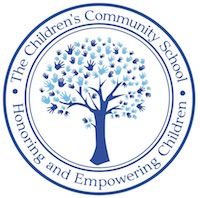Dear CCS Summer Club,
Hi everyone! In today’s video, I make a “Memory Map” of a place that is very special to me – the Redbud Room at Children’s Community School. You can invite your child to draw their memories of any place they care about; it could be their room, a favorite park, a relative’s house and then create a map of their memories. The second activity offers children a fun way to participate in making a healthy lunch or snack.
Activity One: Make a Memory Map
Supplies: Small pieces of paper or post-its, any drawing tool (markers, crayons, etc.), a larger piece of paper, and tape or glue sticks.
For all children: Invite your child to think about their favorite memories of a particular place and draw them on the smaller pieces of paper. Making marks while thinking and talking about their special place gives children a chance to use marks to express their thinking.
For toddlers and younger preschoolers: Younger children may not yet be drawing representationally, and that’s fine! Repeated experiences with drawing will allow your little one to begin to understand that drawing and writing can be ways to express themselves. Right now, any mark that has meaning for your child is meaningful. Little ones may prefer to do one big drawing, or arrange small drawings in a collage without the mapping element.
For older preschoolers and school age children: Once your child has drawn a few memories of their chosen place, invite them to arrange the pictures on the larger piece of paper, thinking about where things were in relation to one another. Using post-its or painters tape may be helpful in letting them make adjustments as they go; if using glue or stronger tape, encourage them to wait until all the small papers are where they want them before attaching them to the larger paper.
Activity Two: Fruit or Veggie Faces
Your child can make their own fruit or veggie face for lunch or a snack!
The “Face”: English muffin half, mini-pita, toast or rice cake
Spreads: Hummus, guacamole, cream cheese, or nut butters
Vegetables: Use any veggies that can be eaten raw, for example: slices of cucumber, shredded carrots, red pepper strips, peas, etc.
Fruits: Use any fruits such as slices of banana, berries, pieces of mellon, etc.
For all children: Invite your child to make a fruit or veggie face to eat. Adults should decide if they will cut the vegetables or fruits ahead or invite their child to help. Younger children and children without cutting experience may do better with soft fruits, such as cutting banana slices with a butter knife. When the fruits or veggies are ready, invite your child to spread the hummus (or other spread) on the English muffin. Then add whatever fruits or veggies they want to make a “face” to eat.
Children are often more interested in eating vegetables and fruit when they are involved in making meals. Additionally, getting to use tools such as (child safe) knives often is very engaging for young children, develops fine motor skills, and allows children a sense of accomplishment as they use a tool they see the adults in their family use.
For toddlers: Avoid choking hazards with toddlers by using softer foods (fruits or pre-cooked carrots, for example), making sure vegetables are thinly sliced or shredded, and thinly spreading nut butters.
Have a Happy Summer!
